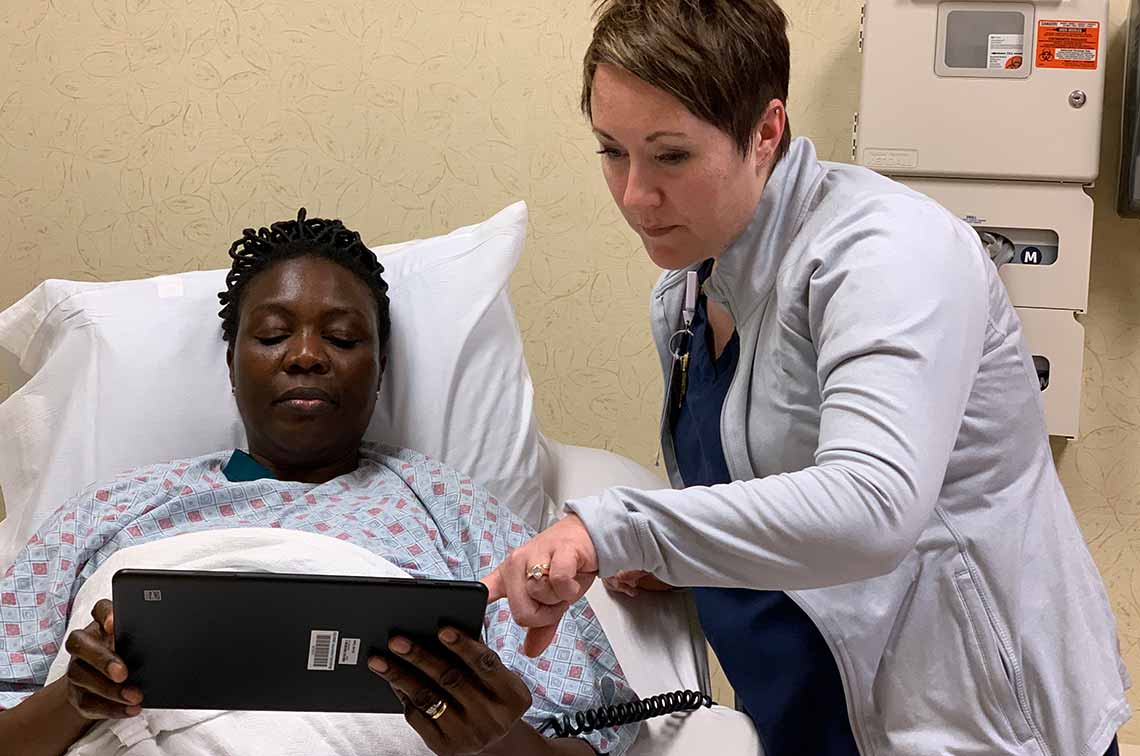
Discover how we're providing tools to improve access to health care.
It's your command center. It controls every message to and from your brain, and throughout your body. It even drives your immune system. That's why innovative spinal cord care and research is at the core of what we do.
The Ohio State University Wexner Medical Center is one of only seven Level I trauma centers in the nation linked with a spinal cord injury rehabilitation program and a national Spinal Cord Injury Model System. This means we're among the best institutions sharing promising interventions in spinal cord care and recovery.
Our Center for Brain and Spinal Cord Repair is leading the way in research that helps people regain abilities and improve quality of life. And it's where we teach the world's leading spinal cord scientists.
Over 200 researchers from more than 20 countries have trained in our program and now lead other research teams worldwide.
"Our center is an extension of hundreds of different labs all over the world. People in this field see Ohio State as a resource and they seek us out for advice," says Phillip Popovich, PhD, chair of the Department of Neuroscience in the Ohio State College of Medicine and director of the Center for Brain and Spinal Cord Repair.
Now, through a generous $10 million gift from the Belford Family Charitable Fund, we're able to do even greater work.
This gift means a team of talented researchers led by Popovich, Dana McTigue, PhD, and Jan Schwab, MD, director of the Spinal Cord Injury Division, can focus on novel approaches in medical research, patient care, education and training to redefine spinal cord injury care.
“The Belford Center for Spinal Cord Injury will take a holistic approach — seeing the treatment of spinal cord injuries as a systemic problem, and working to reduce the onset or impact of associated complications.” Click to tweet this story
The Belford Center for Spinal Cord Injury will take a holistic approach – seeing the treatment of spinal cord injuries as a systemic problem, and working to reduce the onset or impact of associated complications such as infections, cardiovascular disease, diabetes and other medical concerns.
"We're one of the only places looking at this whole body approach for spinal cord injury," says McTigue, vice chair of Research in the Department of Neuroscience. "The more we can understand, the better we can treat things when they go wrong."
For example, research already done at Ohio State has shown that spinal cord injuries can permanently damage the immune system. Patients with injured spinal cords are 37 times more likely to die of an infection than those without a spinal cord injury.
"Your immune system needs your spinal cord in order to function properly. When you injure your spinal cord, you take that immune system offline, and communication is completely disrupted," Popovich says. "It's now become clear that how the brain and spinal cord communicate with the immune system is important for virtually every human disease, including spinal cord injuries."
Ohio State researchers have also shown that spinal cord injuries cause dramatic shifts in the types of bacteria normally found in the intestines. This leads to microbial imbalance, which can cause or contribute to disease. We're focused on understanding this gut-immune-central nervous system connection and its role in recovery from spinal cord injury.
With our comprehensive approach to research, care and rehabilitation, we offer new hope with new therapies that were unheard of just a few short years ago.